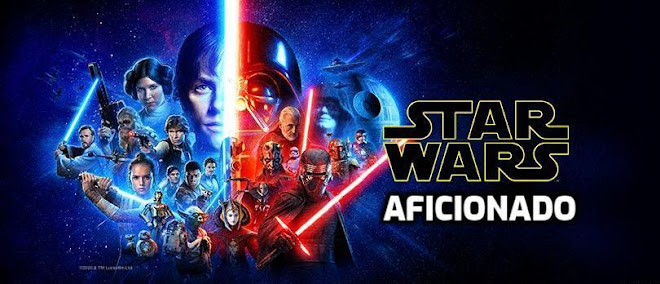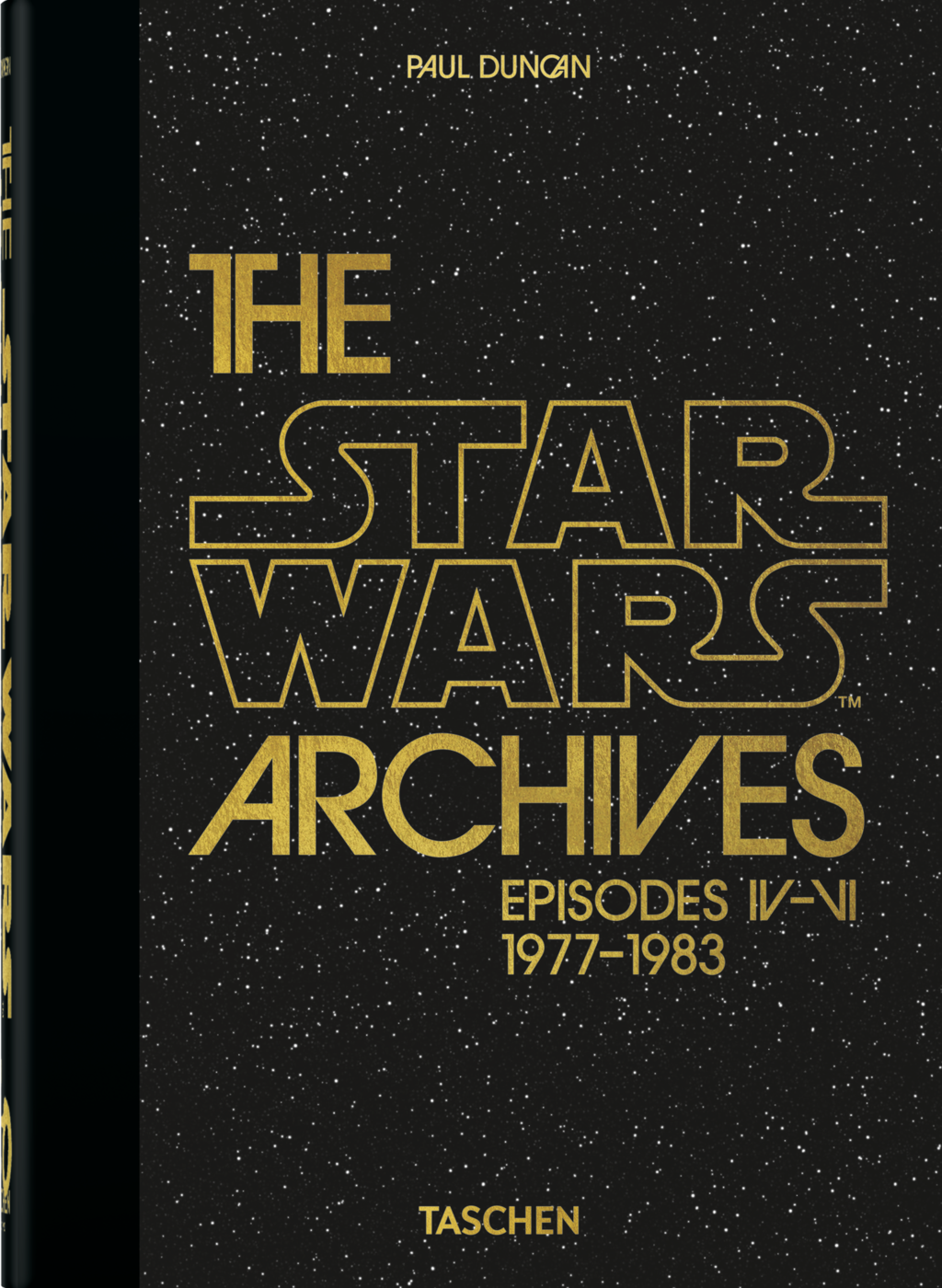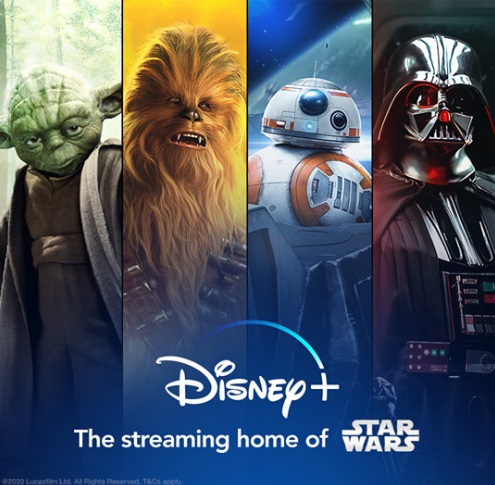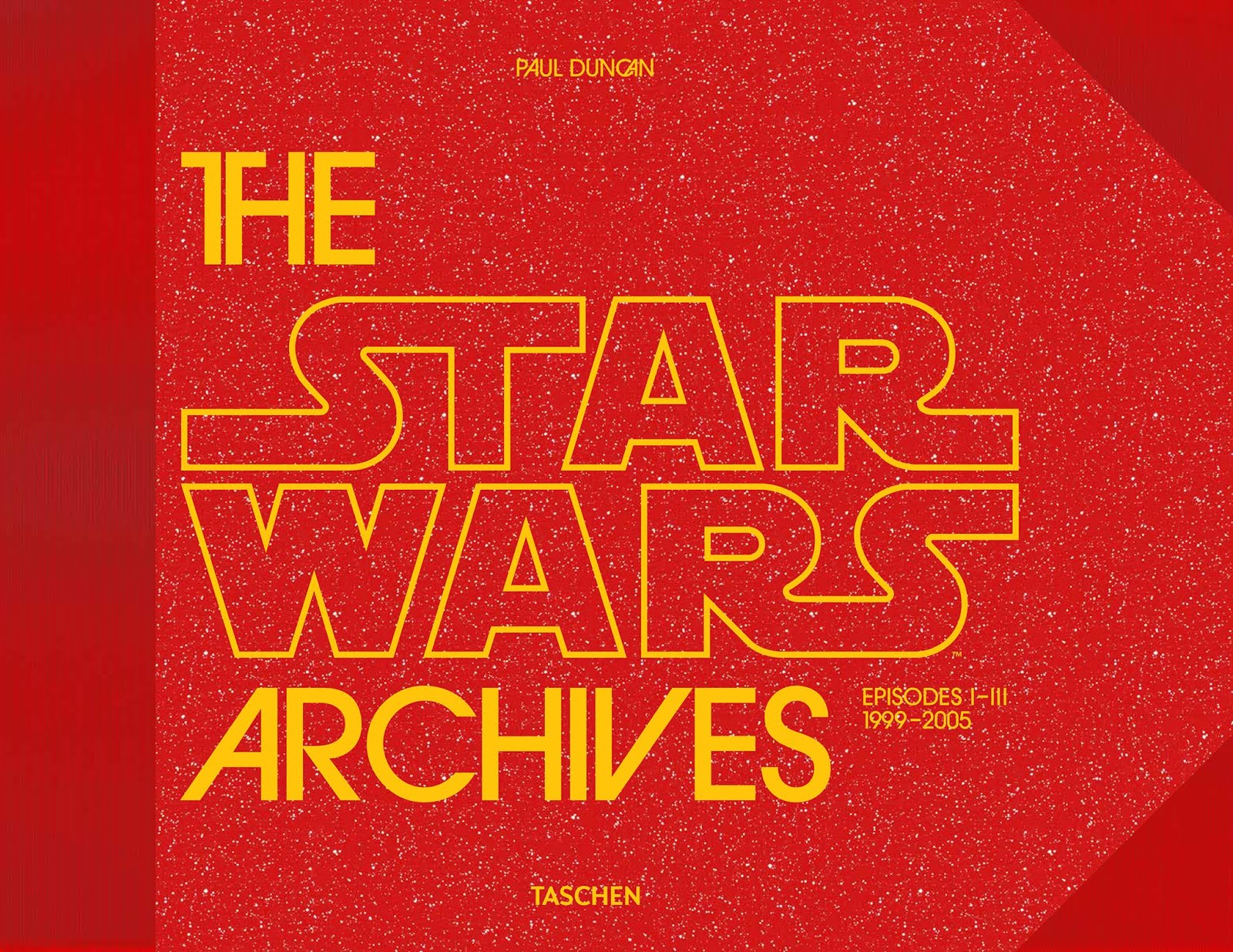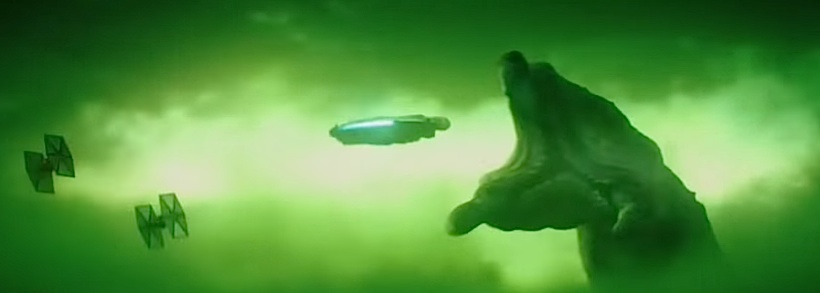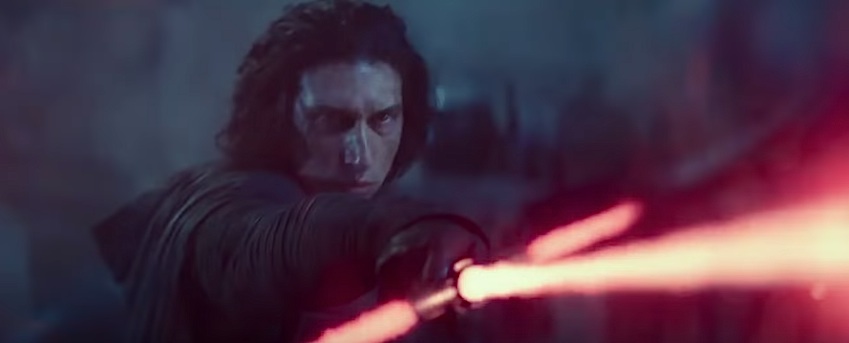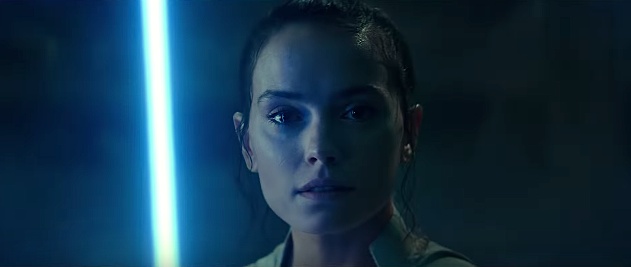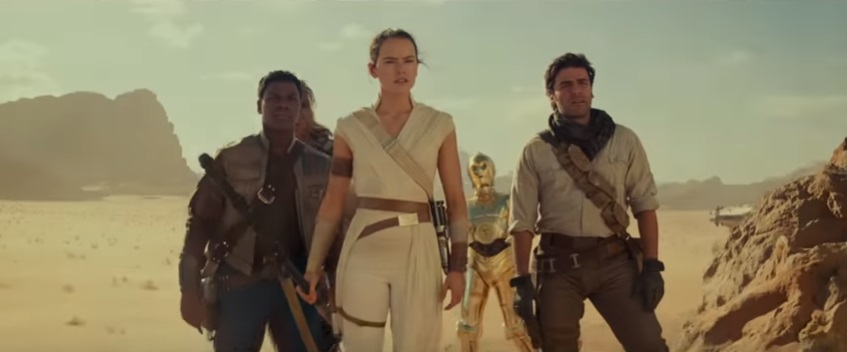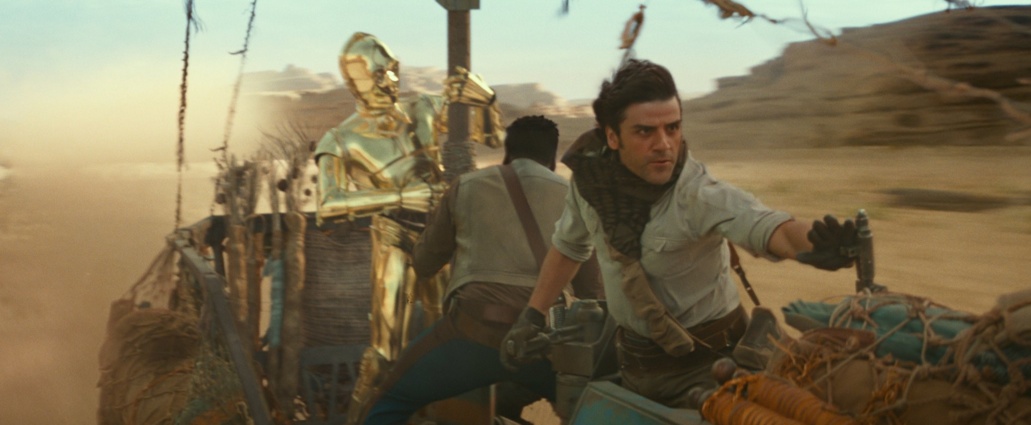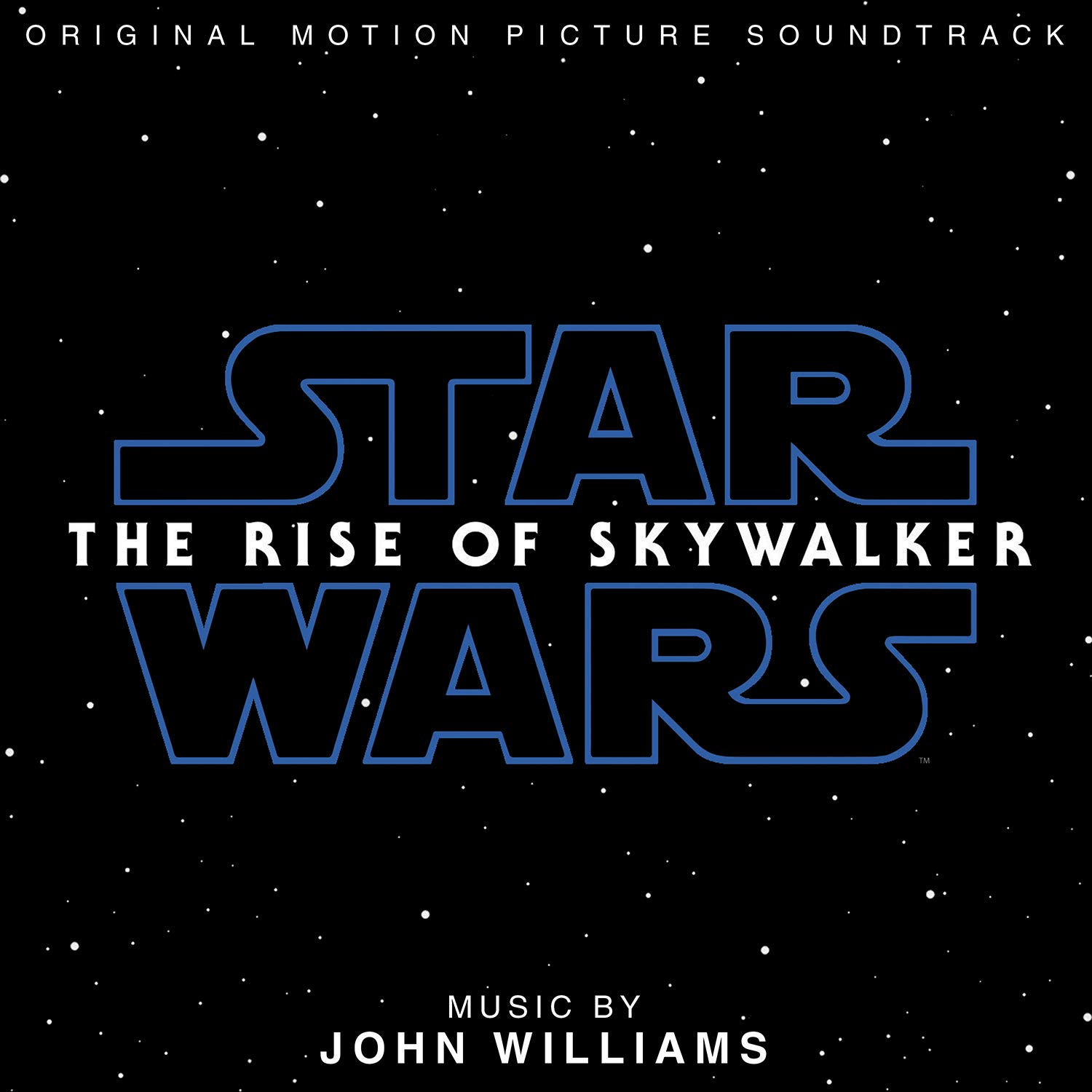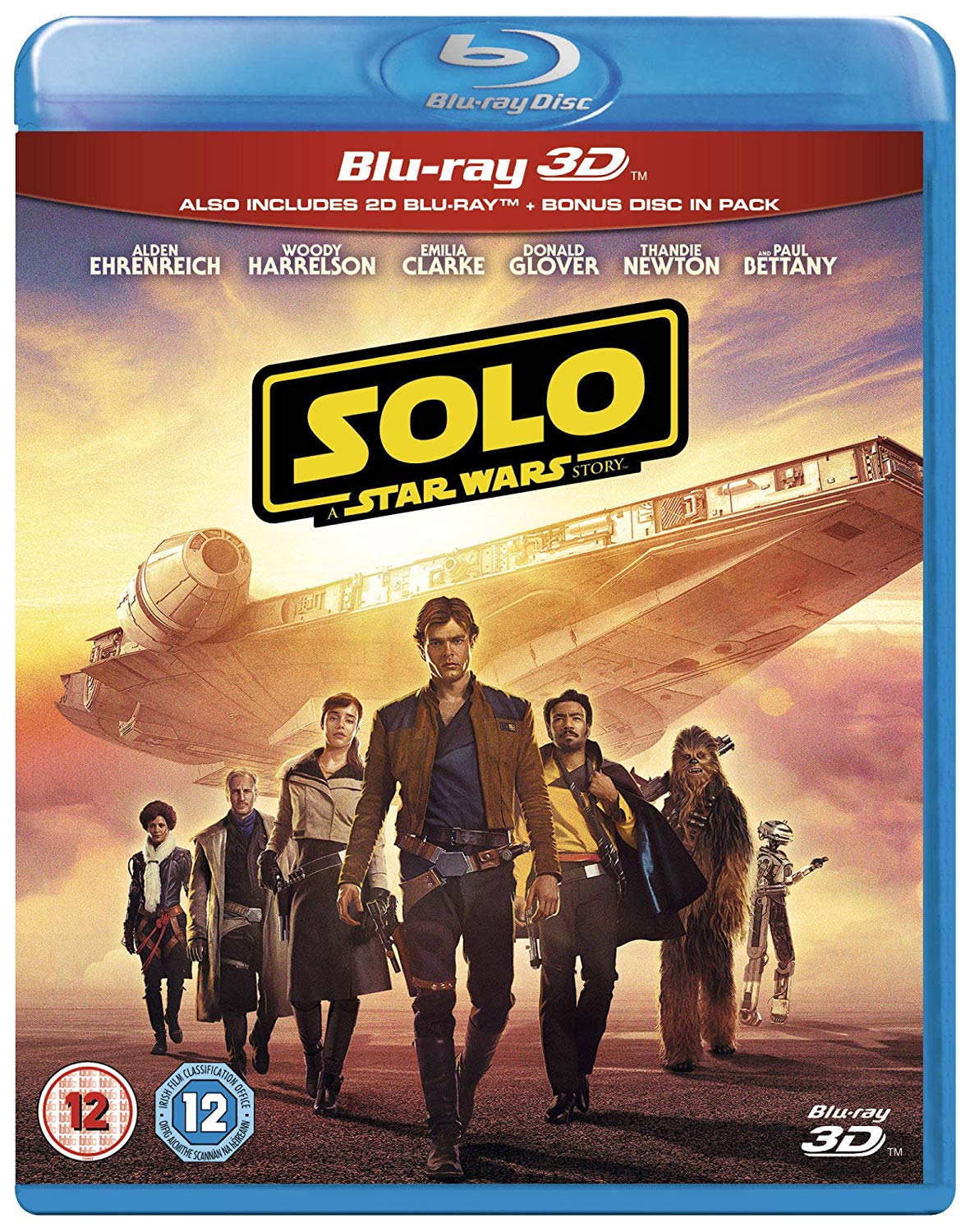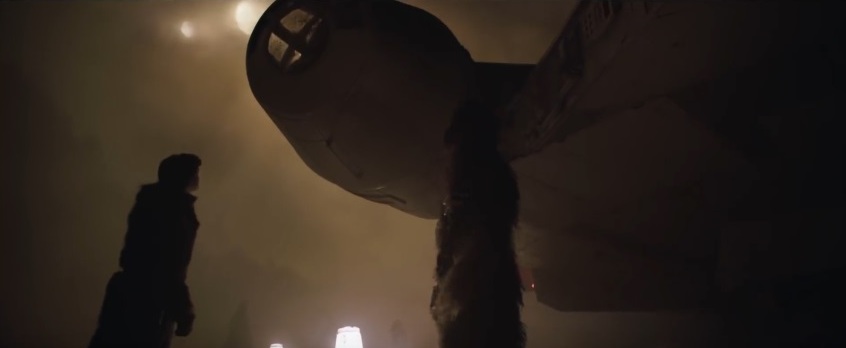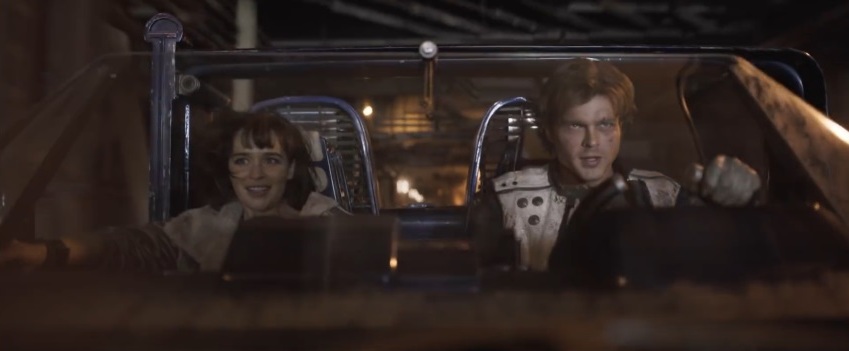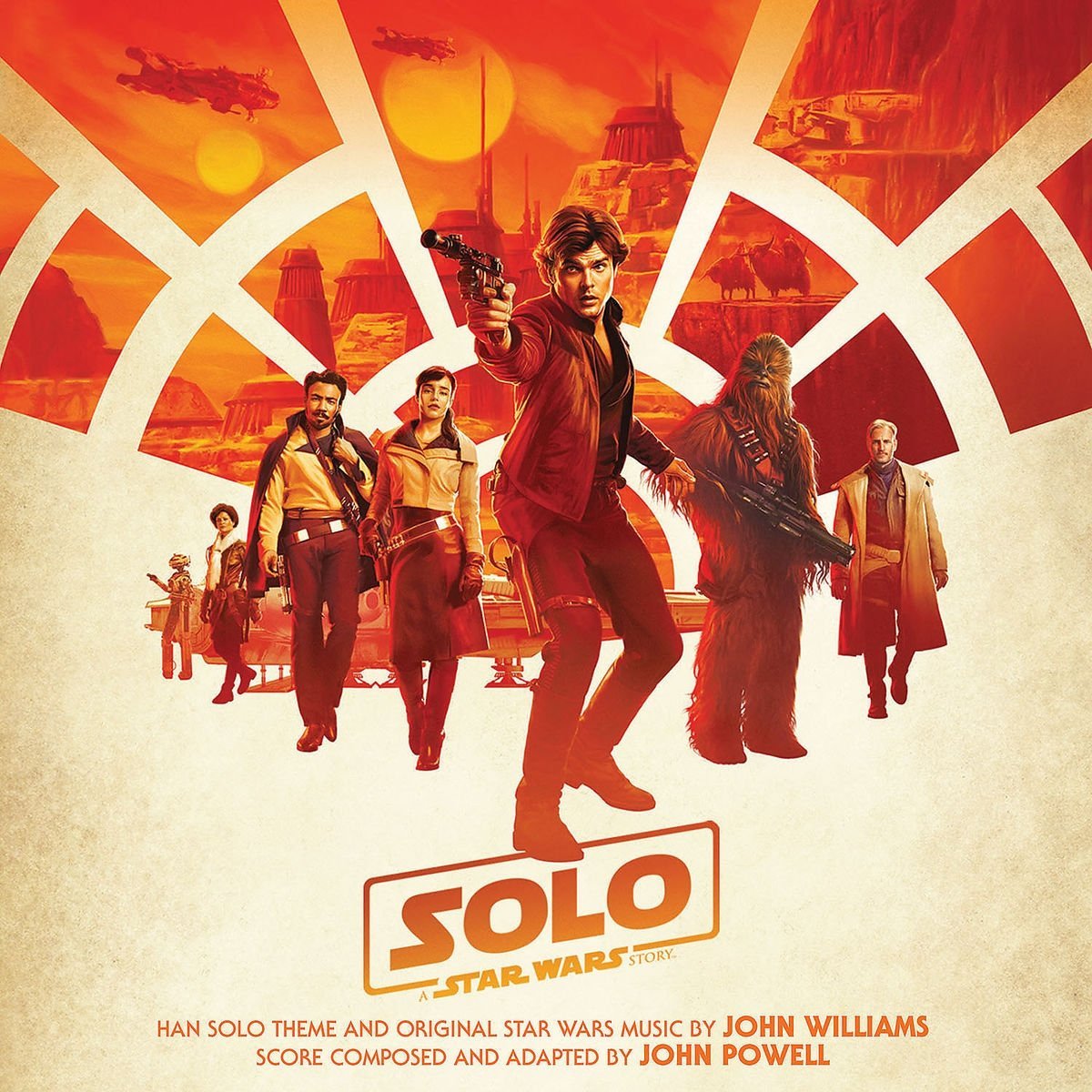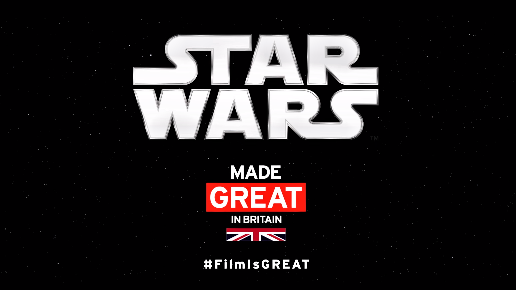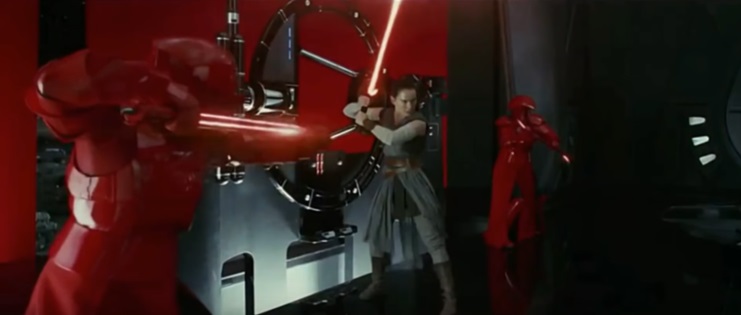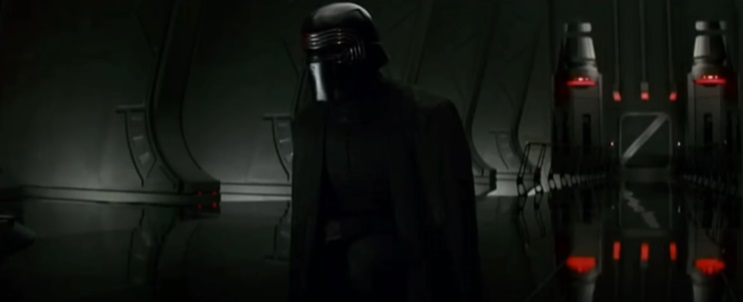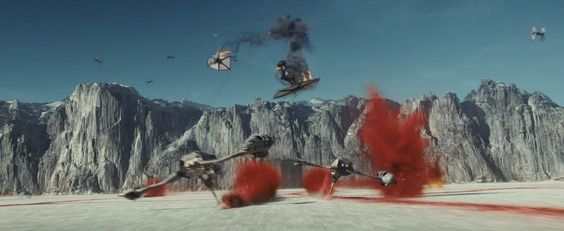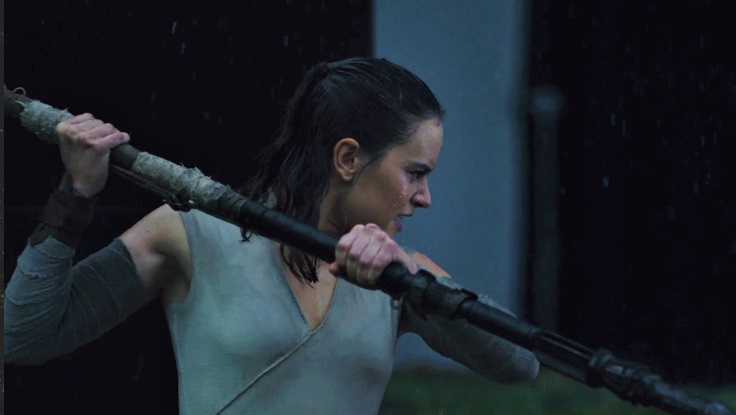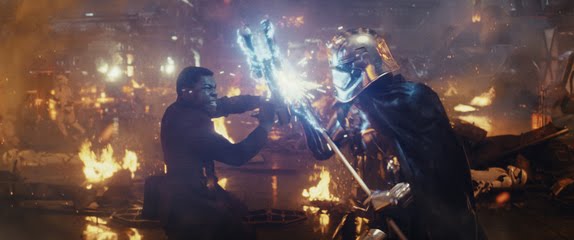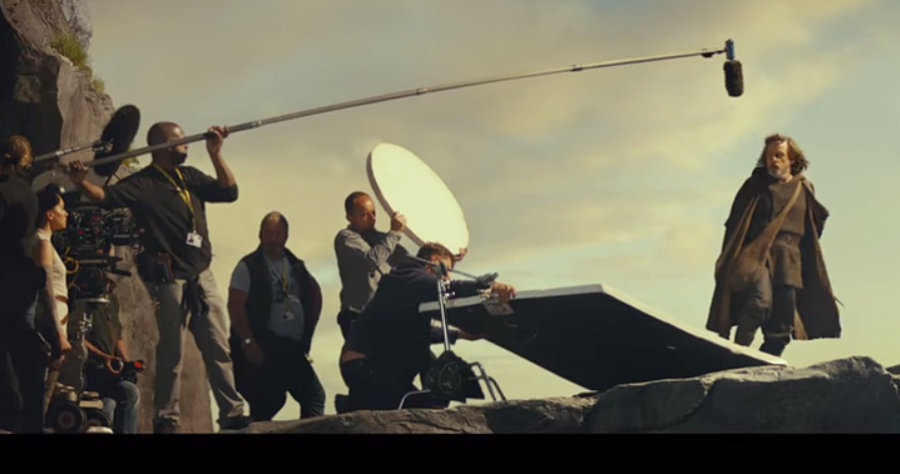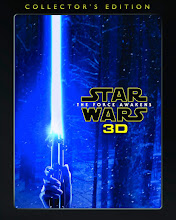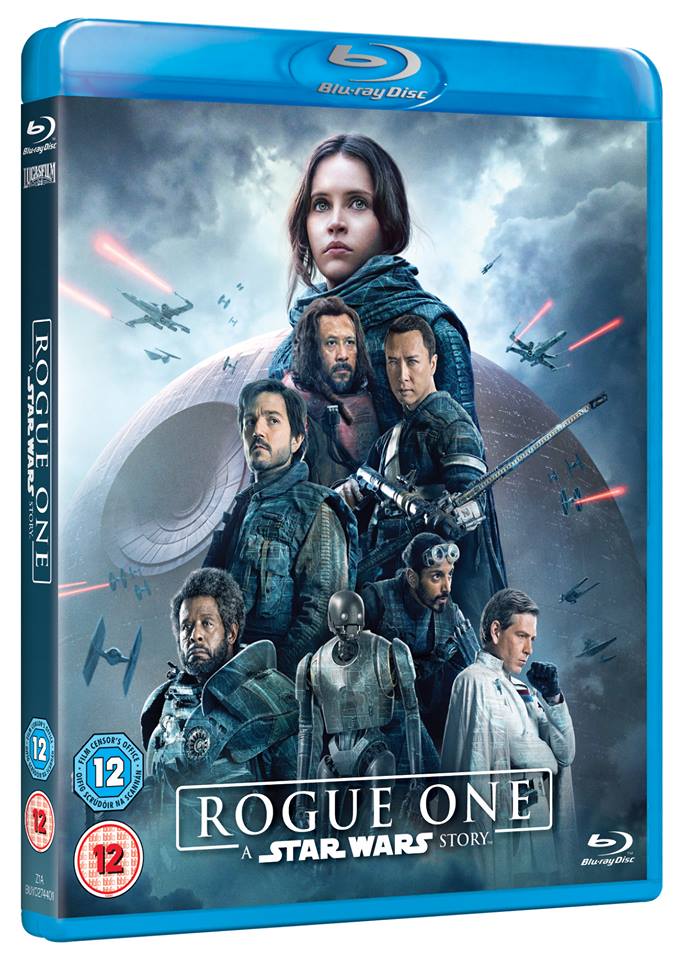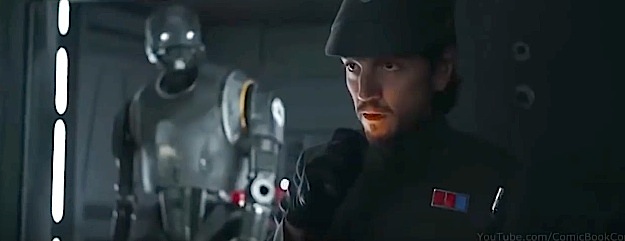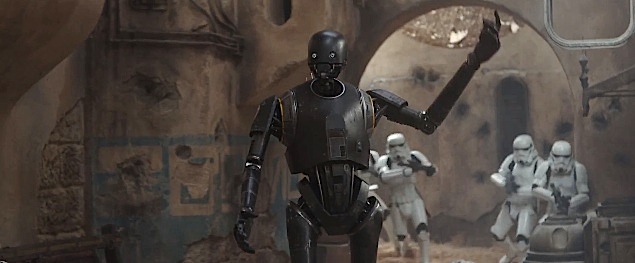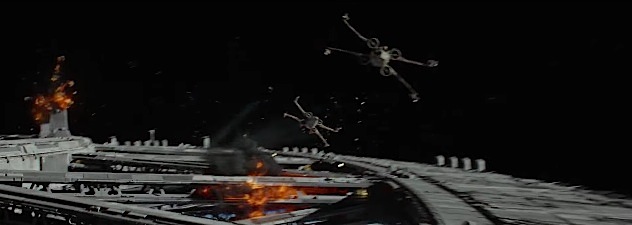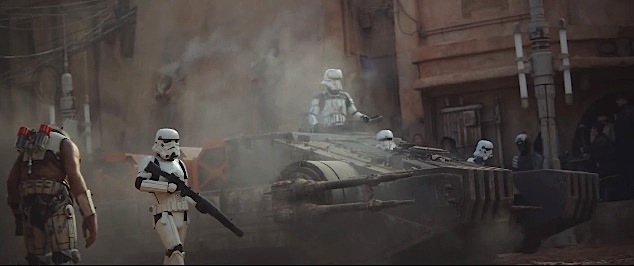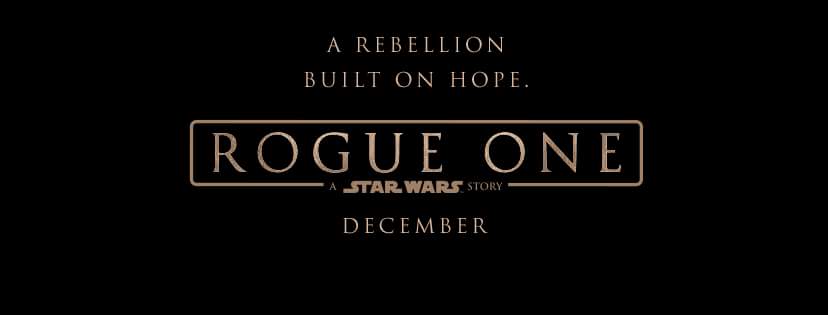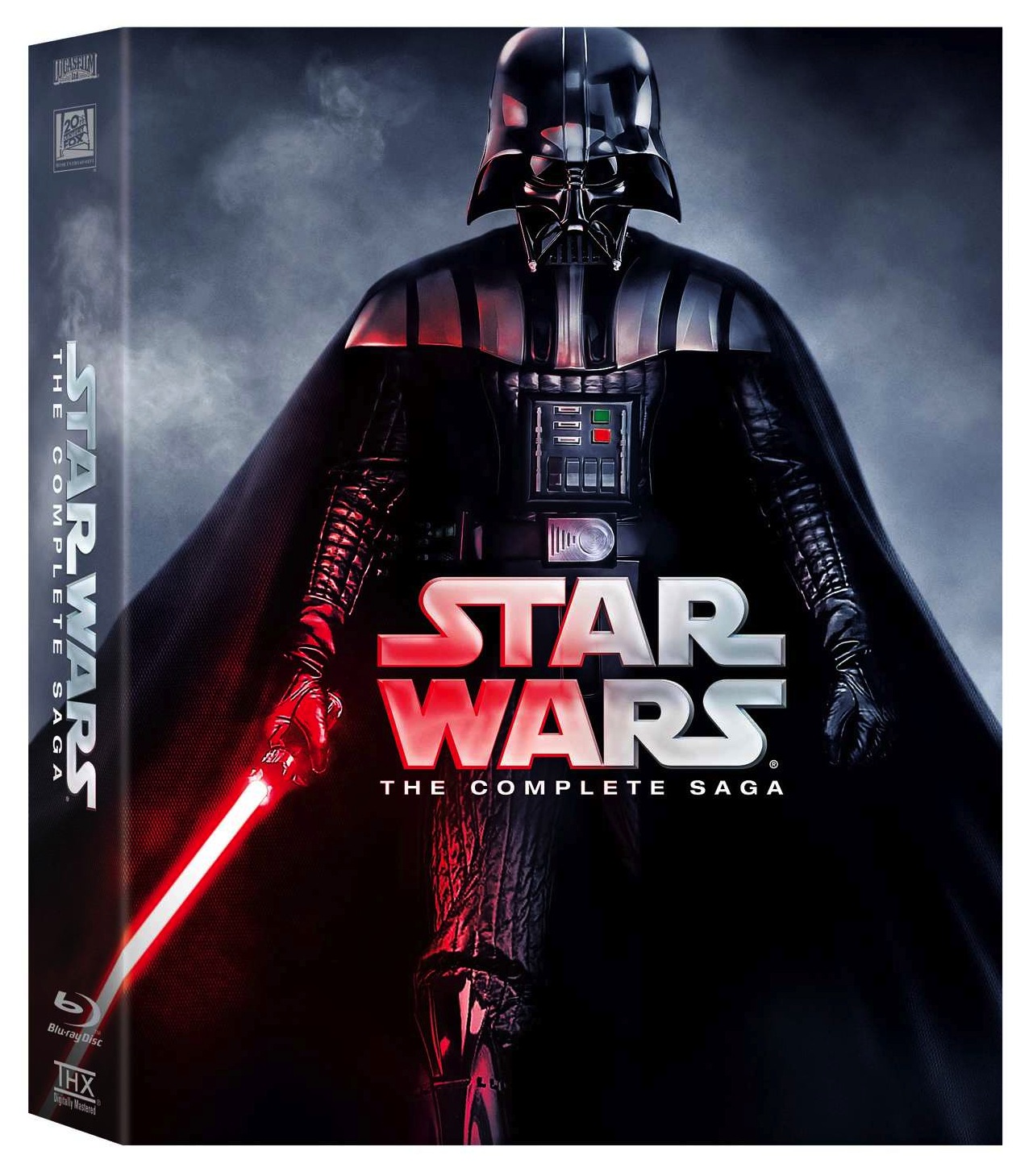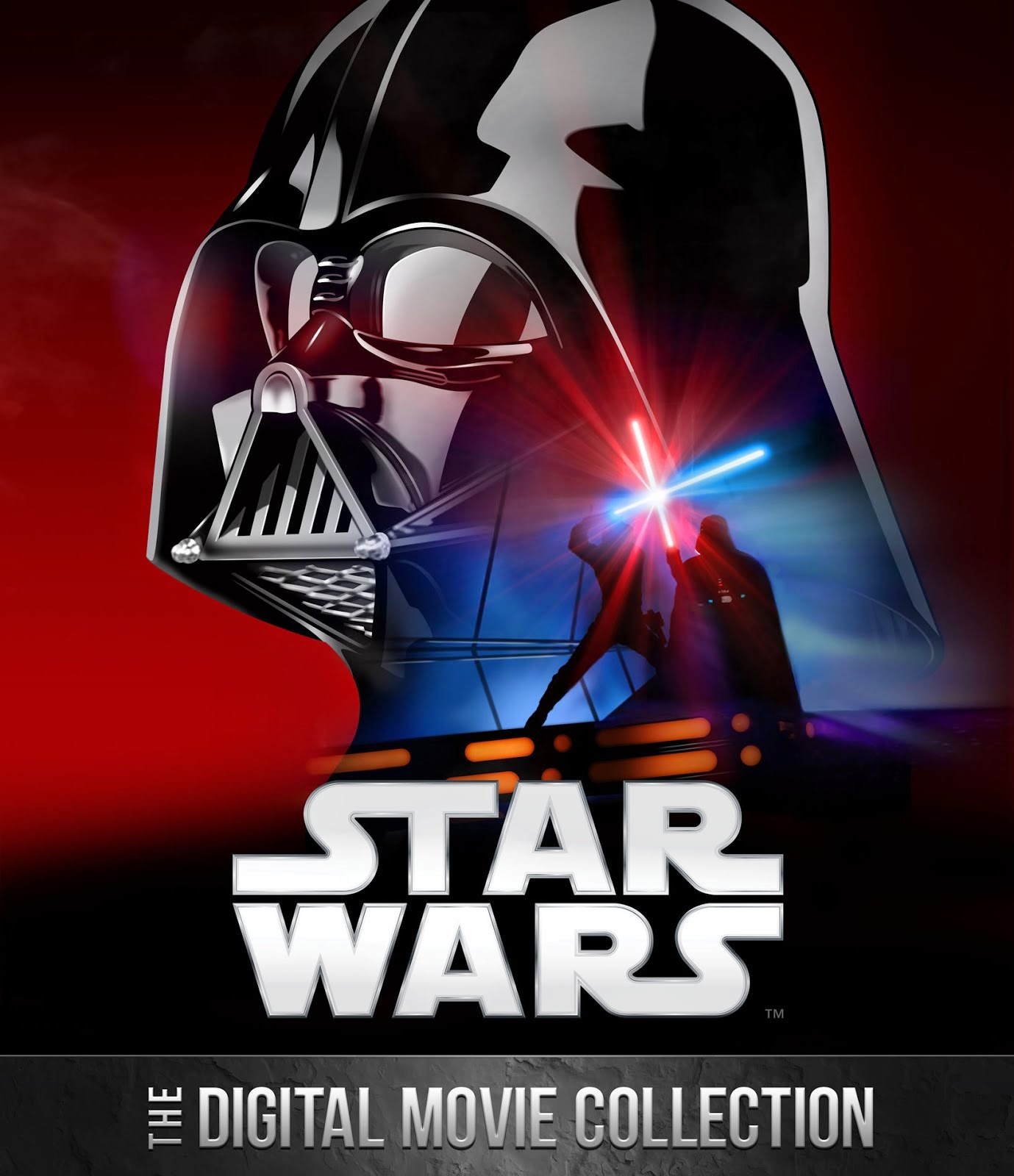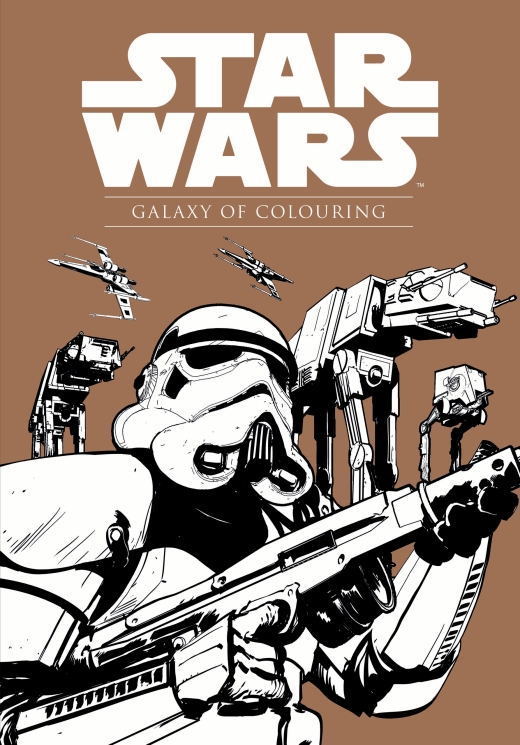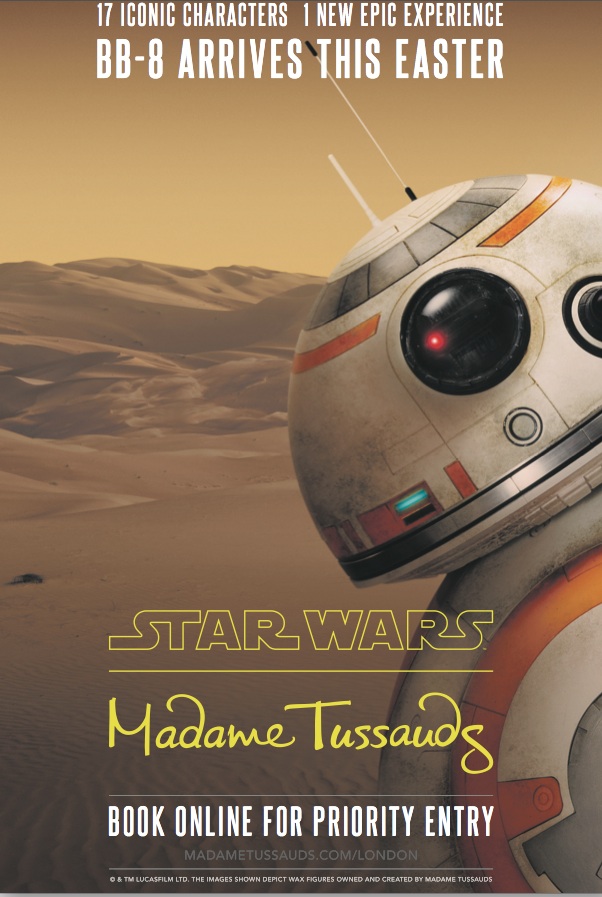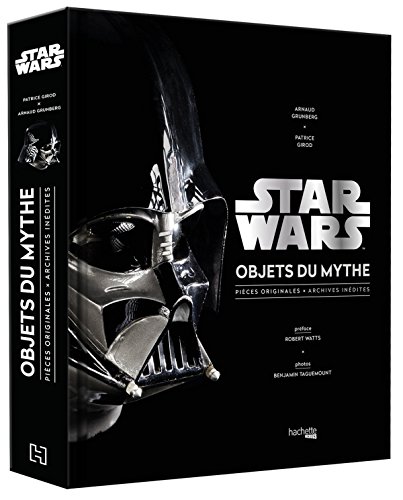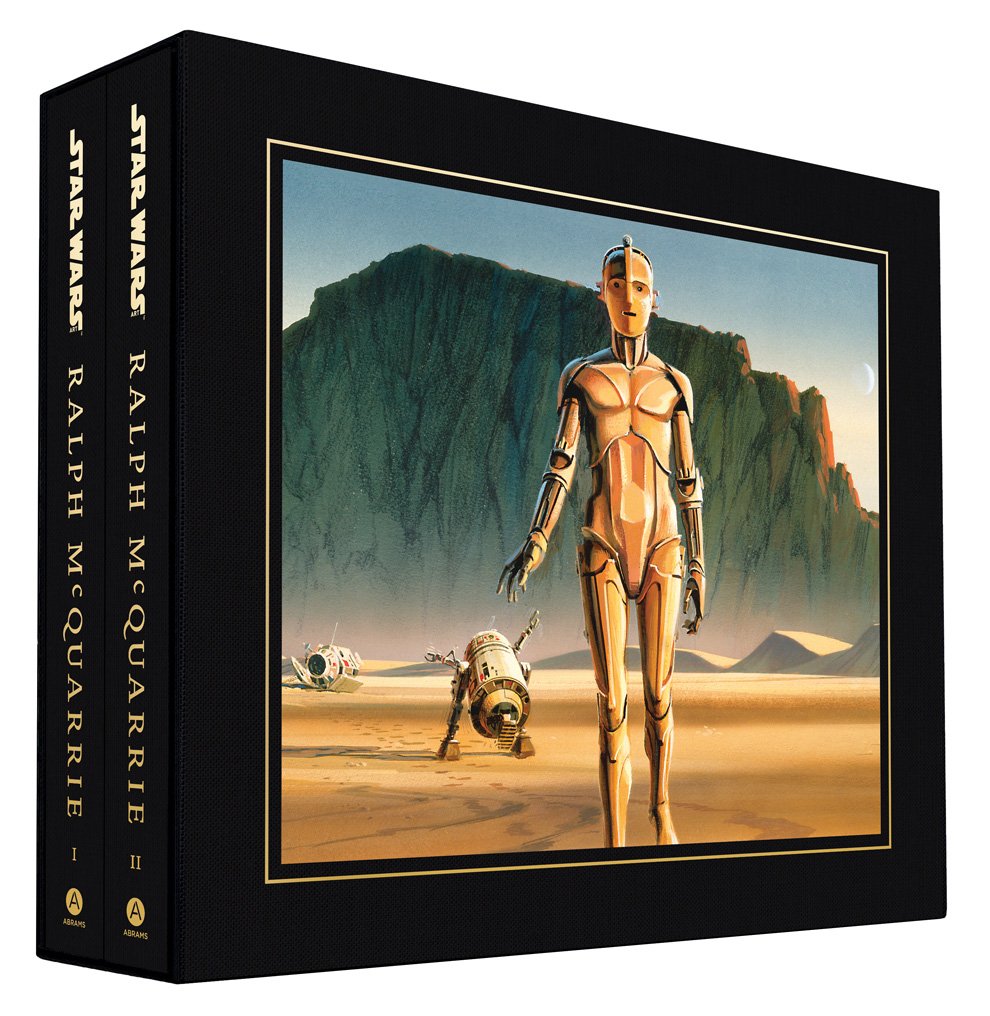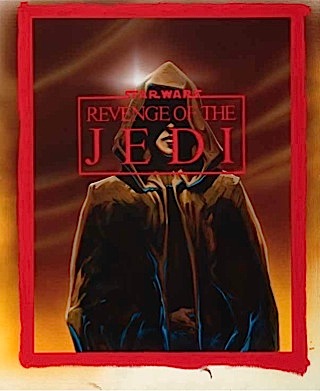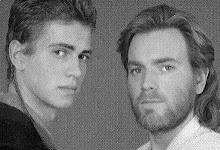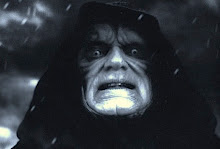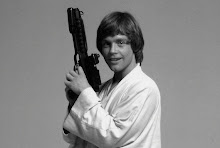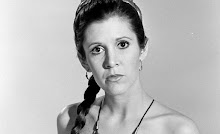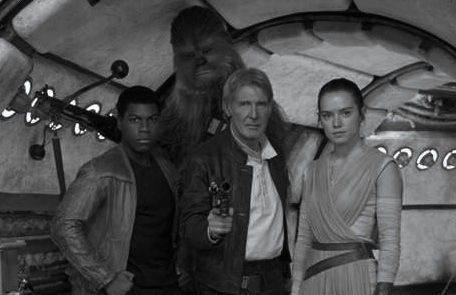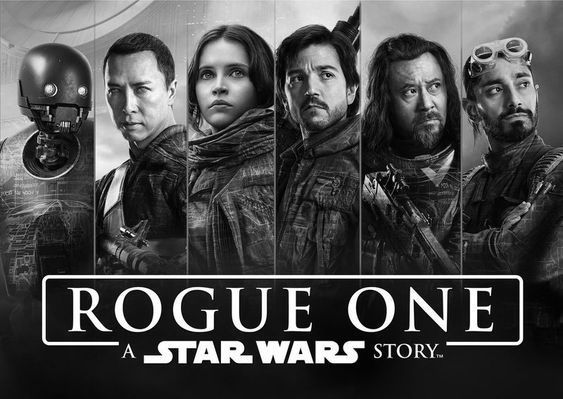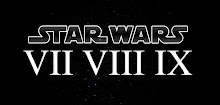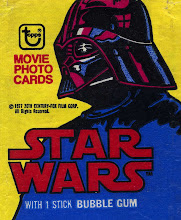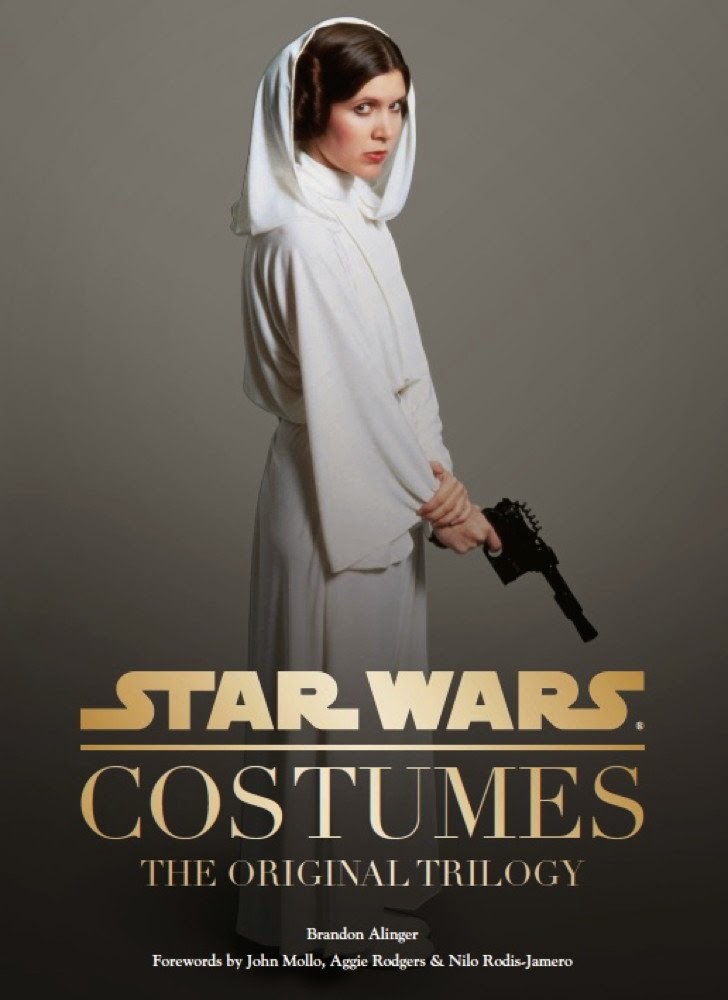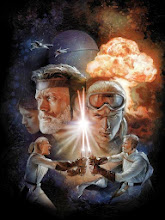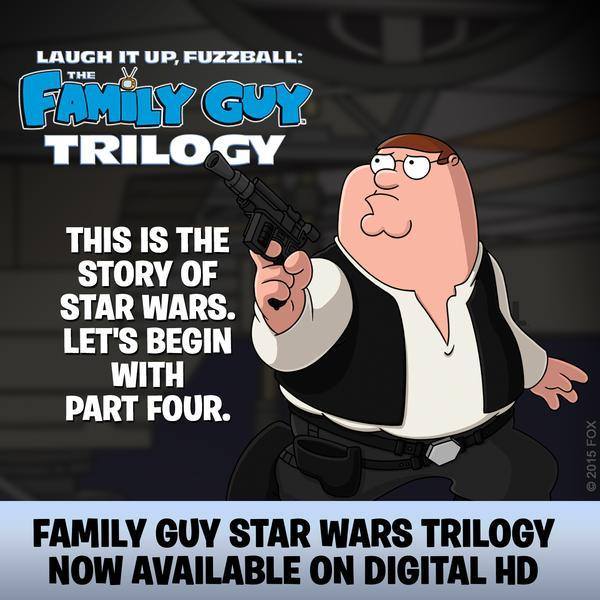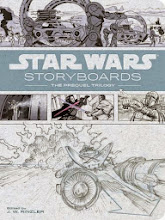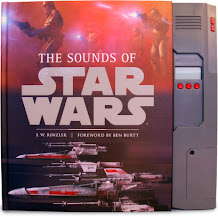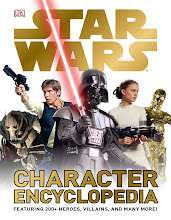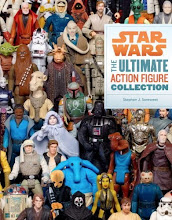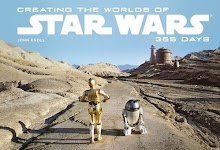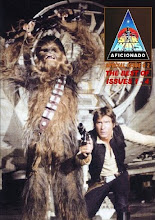Tuesday 30 April 2013
CLASSIC IMAGE: TROUBLED TIMES...
Amidst the darkening skies of Coruscant, two Jedi, two friends- Anakin Skywalker and Obi-Wan Kenobi- discuss recent dramatic events regarding the Republic, its leadership by Supreme Chancellor Palpatine, and the future of the Jedi Order, in a picturesque and dramatic moment from EPISODE III.
ROTJ AT 30: MADE-UP MAN MONSTER!
The original full make-up of Ian McDiarmid's Emperor from 1982 is properly revealed, in one of the first new and rare behind the scenes B/W images making an appearance in J.W. Rinzler's hotly-anticipated MAKING OF RETURN OF THE JEDI book, co-inciding with a fun anniversary feature on the film by USA TODAY: 'Star Wars' film 'Return of the Jedi' marks 30 years
As we await the new book, don't forget, AFICIONADO's exhaustive behind the scenes look at the film (from 2008) is also still available on PDF here: STAR WARS AFICIONADO ISSUE 14 - THE MAKING OF "RETURN OF THE JEDI"
Monday 29 April 2013
CLASSIC IMAGE: POWER AND CORRUPTION
An EPISODE II shot of the Republic Senate building on Coruscant-once the home to wise and dedicated men protecting the peoples of the galaxy, now a corrupt powder keg of ambition and greed.
CLASSIC ART: THE (PALITOY) STORY SO FAR...
Here's a terrific UK toy advertisement for the PALITOY STAR WARS: THE EMPIRE STRIKES BACK range from 1980/81. I think the art is by popular visualist Ron Smith, who did a lot of work on the 2000AD sci-fi comic magazine of the time (notably Judge Dredd), but I can't confirm it.
Sunday 28 April 2013
AFICIONADO CLASSIC REVIEW: 'THE MAKING OF 'STAR WARS' BOOK (HARDBACK & PAPERBACK)
THE MAKING OF STAR WARS
By J.W. RINZLER
(Published by EBURY PRESS 2007)
Reviewed by Scott Weller
Coming out of the cinema in 1978, after my first life changing experience at seeing STAR WARS (not at the time known as A NEW HOPE-this was STAR WARS, just STAR WARS!!), I was a seven-year old who was far too young to realize how the film had been crafted by hundreds of actors and technicians. Such was the films believability to me, the “used universe” that it would later be called, that, at that point in my small life, STAR WARS had seemed to have been created almost organically just for my own personal enjoyment- I wasn’t even aware of the magnitude of dedication and hard work needed to realize it, or, in the years to come, of the nightmare struggles overcome to make it a reality for audiences to enjoy for the next thirty years to come (and beyond). Eagerly snapping up as many STAR WARS items that she could for me on our modest family budget, my mum would, in 1980, go on to buy me the first MAKING OF STAR WARS book, titled STAR WARS: THE MAKING OF THE MOVIE by Larry Weinberg (of which copies are still available to buy on AMAZON), a US import then available at the British FORBIDDEN PLANET store (not that new imposter chain store, we’re talking about the original Denmark Street address-now that was a science fiction paradise!!). Pretty much a basic, large type size children’s read on the films special effects, monsters and technology created for the film, it was a nice book for the ten year old that I was then. But as the years went on, and I continued to look at that book as an adult, I began to wish that there had been a proper behind the scenes book on the original film. It was going through an old issue of STARLOG (the classic issue 7 with the now famous TIE/X-Wing on the cover) that I discovered that a MAKING OF STAR WARS book had been on the roster for release in 1977/78, to have been written by a certain Charles Lippincott, the film's enthusiastic advertising and publicity supervisor. But what had happened to it? The disappointing lack of that release would be equally compounded by the fact that there would eventually be two STAR WARS making of books released in 1980 and 1983-the superb ONCE UPON A GALAXY: THE MAKING OF THE EMPIRE STRIKES BACK by Alan Arnold (the film’s Unit Publicist) and THE MAKING OF RETURN OF THE JEDI (edited by John Phillip Peecher), a good but obviously highly edited version of the film’s behind the scenes activities.
Now, 25 Years later, my dream has finally become a reality with the release of THE MAKING OF STAR WARS by LUCASFILM Executive Editor J.W. Rinzler-and to my joy and relief, I can truly say that, not only is it a great book on the making of the film, it also happens to be one of the best making of a film books that I have ever read. Period!!
And this is quite a book. Huge to read, this will take up a vast amount of time to absorb and no doubt improve your muscles and biceps when holding it for a lengthy period. But, boy, is it worth the trouble...
 |
| Mark Hamill and Carrie Fisher prepare for the chasm swing. |
This is truly a treasure trove of embarrassing riches. Of the “lost” Charles Lippincott 1976 interviews, which would critically help make this book a reality, the best are from the behind the scenes people, including
 |
| Tunisian extras play Stormtroopers. |
Additionally from the LUCASFILM archive jewels, intriguing other new material has been discovered, especially on the film’s critical editing (which involved Lucas, abandoning his original choice of Editor,
It’s also nice to find out more about the unsung heroes who worked on the film, especially on the pre-production side, and to see some of those individuals, including the original Special Effects designer, Colin Cantwell, get some proper recognition-not only do we finally see what he looks like, but we get to see some photos of him linked to his work on the film. Very cool little drawings by George Lucas for the prototype spaceships also show just how strong his creative mind was for the film.
Amongst the other great bits of previously unrevealed info are gems like the names of the considered Directors of Photography before Geoffrey Unsworth (later replaced by Gilbert Taylor) and snippets from people like the late British Practical Effects man, John Stears.
 |
| Rehearsing Obi-Wan's "death" scene. |
As well as the intriguing costume sketches and character designs, on the art and photography side, we finally see the intriguing order in which Ralph McQuarrie worked on his production paintings for the film, and discover, in the hardback version only, amazing pre-production action storyboards from both Alex Tavoularis and Ivor Beddoes (including some great storyboard shots from the latter of the Vader/Obi-Wan duel, with the intriguing horns on the Dark Lord’s helmet (also note, Vader’s lightsaber is very much like Darth Maul’s from THE PHANTOM MENACE), and an injured Ben Kenobi surviving his encounter.
It’s also amazing to see how much of the Prequel Trilogies concepts and ideas existed from STAR WARS original concepts and drafts, especially THE PHANTOM MENACE and REVENGE OF THE SITH. Now, more than ever, we have to accept these three modern STAR WARS movies as part of the saga envisioned by George Lucas.
 |
| The first day's filming is full of incident. |
Great photos are equally abundant in the book, like the filming in
 |
| Hamill, Fisher and Ford have fun in this out-take! |
As you continue to read the book, it’s amazing to discover the myths that are de-bunked, re-clarified or newly revealed. Previous already known information becomes equally more compelling with additional material never before revealed and certain things of the films genesis become clearer. From reading the book, with the exception of visionaries like Alan Ladd Jr. and Gareth Wigan, the 1975-1977 management of TWENTIETH CENTURY FOX comes over as a complete bunch of morons-showing little of the creative talent that they promote themselves as having. I had read that FOX had stalled the production and caused chaos and delays to the film’s pre and main production, but, in a new personal discovery, I hadn’t known that the film was actually shut down at one brief point in pre-production during October 1975, when FOX hadn’t given their commitment to the film (due to money problems from the disastrous critical and financial failure of their Burt Reynolds/Liza Minnelli movie LUCKY LADY). Their general apathy towards STAR WARS (you could say they considered it to be like the crazy old Uncle that no-one talks to at a Thanksgiving party!!) would continue into its limited release, and their later penalty fee charging of Lucas for going over budget, by taking some of the money off his directing fee when the film had opened to huge success, and making the FOX board records sums of money, is something that the film company should be ashamed of from now until forever!! In the end, you can really see that it is Lucas’s sheer bloody mindedness, and, in the beginning few years of post-production, his own money from the eventual, and deserved, success of AMERICAN GRAFFITI, that got that film made at all!
 |
| The creatures of the Freeborn workshop revealed. |
Intriguingly, however, some of the now mythical nightmare tales of the movie’s studio filming, revealed in numerous books and interviews over the years, are also seemingly played down here-the book talks about the final chaotic days of STAR WARS principal photography in late July 1976 as if the shutdown of the now over filming schedule project was not the problem that it would since have been perceived-as far as I was aware STAR WARS was shut down by FOX against the vehement wishes of a hurt and betrayed Lucas-that the director was disillusioned with what had happened and what hadn’t been shot or successfully completed in the schedule. From Rinzler’s description of the final days, using interview quotes from Gary Kurtz at the time, it doesn’t seem that the film, at that phase, was as seriously hampered after all...
The story behind the problems and failure of the front projection shooting with the effects are also fascinating in the vast section devoted to the film’s post-production, and, in my own personal reading between the lines, it seems to me that John Dykstra, realizing the films potential and how revolutionary it would be if he and his team could pull it off, was probably overwhelmed by the effects responsibilities but didn’t want to admit it. He and his team would plough on to develop model filming techniques that are still as good as ever thirty years on. If any people were to be continually deserved of their success, then Dykstra, Muren, Tippett, Ralston and Edlund should certainly stay at the top of the list for their effects work!
 |
| The legends of STAR WARS. |
As for the all important clarification of history, the book scores well on many incidents. I always believed that the legends of the different versions of the films soundtrack were kind of exaggerated or used by LUCASFILM to hide later inconsistencies/additions in the films subsequent release on TV, video and DVD, but having read that section of the book I now firmly believe in all the differences being made to the audio mixes at that time in 1977. With Ben Burtt not having done his own original sound mix- Stan Shaw supervising the original 1977 mix version instead- it’s now no surprise to me that Burtt would continue to tinker with the sound design of the first film for the 2004 DVD releases-wanting to put his own stamp on the films sound in a way he probably wasn’t able to do in 1977, which would also result in a controversial, mostly negative, reaction from hardcore fans used to the way the film was originally mixed, when the DVD of the first film was first released in 2004.
As with everything in life, there are always some niggles. And this applies equally to this book as well. Some parts of its layout are a bit of an eyesore or waste the use of rare photos that Rinzler himself had specially selected. Though this is not the author’s fault, there is also a lack of production material available on certain aspects of the film’s making-from a conversation I had with the author I discovered that some information/photography was never kept by LUCASFILM, or was lost, now in private hands, or destroyed. On the actor’s front, there is also a lack of Dave Prowse information, interviews and photography in the book. Before the actor was ostracized from RETURN OF THE JEDI, surely there must be some great Prowse/Vader material from 1976 out there? Additionally, one day, it would also be nice to see a full cast list for the film, including the names of all the American actors who did dialogue re-dubbing. There’s also hardly anything on the X and Y-Wing pilot blue screen filming- and nothing on the actors who played the roles.
But, as I said earlier, the above really are minor niggles, especially as the book is so huge and covers so much. It was a big risk for LUCASFILM and EBURY PRESS to green-light this epic and costly to produce book, and, as far as I’m aware, the risk has quite rightly paid off well for them.
 |
| Some time in the desert. |
To sum up, THE MAKING OF STAR WARS is one of the most important books ever written on a cultural event that just also happened to change the world. Seeing the book brings back the nostalgia of being a kid again- I particularly love the images of Fisher, Ford and Hamill on set and enjoying the great filming adventure that would become STAR WARS (and boy, they were SO young!!).
The essence of a good coffee table book like this is how often you go back to it once you’re read it. I have to say that I’ve been going back to it a lot recently-not just for research reference but just because it’s such a damned good read.
Now more than ever we need the enjoyment of the STAR WARS films. For me, in particular, that first movie. And reading this book, it makes me want to: a) read the book all over again, and b) watch STAR WARS all over again as well! That doesn’t sound too bad!
I could go on all day about all the other great stuff you can find out about within THE BOOK (as I now call it!), but I don’t want to spoil it for everyone. Instead, just two words of advice: GO BUY IT!!
AFICIONADO RATING: 9 out of 10
AFICIONADO REVIEW UPDATE-2008
THE MAKING OF STAR WARS: PAPERBACK SOFTCOVER EDITION
By J.W. Rinzler
Published by EBURY PRESS U.K. 3rd July 2008
Reviewed by Scott Weller - 19th July 2008
Now everybody in the small universe that I exist in knows that I love, I LOVE, the hardback version of the MAKING OF STAR WARS, so when this paperback version of the book suddenly became available unbeknownst to me (I was expecting it to be re-released at some point as a softcover large format book instead), I was pleasantly surprised-I no longer needed to hold a half a ton of excellent reference matter across my arms when using it in my researches and brainstorming-the book is now in a lovely compact form and it now doesn’t weight too much at all!! It still is a superb read-I’m on my third consumption-and it has been referred to by both myself and my family as THE BIBLE OF STAR WARS, and, if I keep reading it like this, I may soon be able to quotes large chunks of prose from it in the same way as I remember all the classic trilogy film dialogue!!! Though the engaging text continues to shine and has lost nothing in the new transfer, the main casualty of the reduction was obviously going to be the amount of pictures and artwork that could no longer be used. Yep, it hurts that so much is missing, but special care has been given in making sure that all the areas of the films making, from concept to reality, are given a nice representation of some kind across the books four photo sections-and the photo content is still or a higher quantity than you would get in a lot of autobiography or other types of paperbacks on MAKING OFs...and, additionally to my surprise, there is a new pic in the ELSTREE filming section of the book, too-showing Peter Cushing outside the DEATH STAR Conference Room chamber wearing gloves whilst smoking and chatting to a helmet-less Dave Prowse and Mark Hamill (Cushing wore them so as not to get yellow cigarette nicotine stains on his hands that would upset filming continuity). The unavoidable problem of the loss of pics notwithstanding, I do have one further niggle, I was hoping that some of the minor errors, and I must stress that were really only very minor and very few in the first place, that there were in the book would have been corrected for the paperback, but sadly they haven’t been, and the apology/addition to the volume of UK sculptor Brian Muir, who worked on the all important Vader mask and parts of C-3PO at ELSTREE, for the new edition, as he was previously promised and told to me at CELEBRATION EUROPE 2007 convention, has not materialized, and I personally think it should have been done. A pity...though perhaps a correction may hopefully appear one day when the book is revised further-it has to be at some point, surely? Back to the positive, though, and to the benefit of fans, the book has been nicely compacted, and the drafts of the STAR WARS scripts and story concepts originally spaced out during the hardback books making of timeline have all been put together nicely at the back, in one go, of this new edition, as well as the use of some of the exclusive material, like Lucas’s character notes from 1977/78 as captured by Charles Lippincott (the publicity man who did all those original interview transcripts from 1975-79-how about a book just reprinting all of them in their entireties, together with some really nice rare pics from those periods??) that were only apparently in the hardback edition but not in the big softcover edition that was in the US last year- a welcome addition in the paperback version. The storyboards and beautiful pieces of art by McQuarrie may also be sadly absent, but a paperback would never have done them justice anyway-some of the design art of the ships, vehicles and characters by both him, Joe John ston and John Barry, however, can still be seen, and have been more than adequately shoe horned into the back of the book, too.
So, like Master Yoda himself, the new version of THE MAKING OF STAR WARS may be small, but it definitely packs a punch. The wise and informative text shows that the Force is still very much alive and with J.W. Rinzler. Any more news on the EMPIRE and JEDI books, sir?
AFICIONADO REVIEW RATING: It may lack the grandness of the hardback edition, but this is still, so far, the definitve official book on the making of the first film. 8 out of 10.
CLASSIC BLOG 2007: ADRIAN DUNBAR - THE FORGOTTEN BAIL ORGANA
 |
| AFICIONADO contributor Ian Trussler with actor Adrian Dunbar. |
By Ian Trussler
Before Attack of the Clones and Jimmy Smits, there was another Bail Organa, played by respected Irish actor Adrian Dunbar.
In August 2007 I was lucky enough to meet and talk with Adrian London
He kindly took time to share his memories of his brief period as Bail Organa, and the subsequent disappointment that followed.
Lucas had clearly considered other actors for the role, too, as Ray Winstone (a friend and co-star of Dunbar ’s) has spoken in the past of a very unsuccessful meeting he had with Lucas for the very same part.
According to the Production Diary/Shooting Schedule for The Phantom Menace, Adrian Monday June 30th 2007 , on Stage B at LEAVESDEN Studios.
The scene was listed as: Galactic Senate - Alderaan Box - Bail Organa seconds the motion.
When I showed him a picture of him in costume as Bail Organa he commented on how rare pictures of him as the character are and that he very much liked the costume, recalling it to be very ornate, an almost naval like white outfit with elaborate gold braiding detail.
The picture in question, a head and shoulders shot, is to my knowledge the only picture ever published of Dunbar in the role, coming from the Episode One annual and in the small US
Although Dunbar is undoubtedly a talented actor I personally feel he didn't quite fit the role as I had imagined it. The tall and dark Jimmy Smits seems a better match for what my mind told me the adopted father of Princess Leia would look like.
That said I would dearly love to one day see the footage of Dunbar as Bail Organa/Antillies from Episode One to finally make that judgment. However since Jimmy Smits went on to establish the part, it seems highly unlikely LUCASFILM will ever release the footage.
Above image: Adrian and I have a picture taken outside The Comedy Theatre, Panton Street , London August 11th 2007 . Insert pic: the only shot currently released by LUCASFILM of Adrian Dunbar in character for EPISODE ONE. With thanks to Chris Baker for the image composition.
Saturday 27 April 2013
CLASSIC ART: AN EVOLVING FANTASY
Another great variation of the late John Berkey's unused movie poster art for STAR WARS in 1976/77, one of which ended up as the world famous cover of the novelisation by George Lucas (ghost written by an uncredited Alan Dean Foster).
Check out our previous AFICIONADO ARCHIVE on that original novel, and its differences to the classic movie, here: https://docs.google.com/file/d/0B80ITjM31EVROUhFN3p2T1Fja2s/edit?usp=sharing
AFICIONADO CLASSIC BEHIND THE SCENES INFO - PART THIRTEEN
 |
| Top: Ian Trussler meets Malcolm Tierney and Rusty Goffe. Image composition: Chris Baker. |
“STAR WARS”
BEHIND THE SCENES INFORMATION GATHERED FROM AUTOGRAPHICA SHOW-13TH SEPTEMBER 2009
By Ian Trussler
MALCOLM TIERNEY (STAR WARS EPISODE IV: A NEW HOPE-DEATH STAR
DETENTION BLOCK COMMANDER (known in the EXPANDED UNIVERSE as Lt. Shann
Childsen)
He
got the role without auditioning, he never met George Lucas or anyone prior to
filming. He was cast after his agent submitted his details to the production.
He spent just two days filming his only scene in the detention block set. He
enjoyed his time on the film and remembers well that Mark Hamill and Harrison
Ford were both very friendly to him and joked about with him over his delivery
of his famous "Where are you taking this...thing?" line.
RUSTY GOFFE (STAR WARS EPISODE IV: A NEW HOPE-VARIOUS ALIENS)
I
clarified Rusty's roles in the movie and asked about the whole Barry Gnome/Kabe
mystery. Rusty played three different roles in the first STAR WARS. First of
all, he recalled playing a Jawa in the film (in the Cantina scenes in London, not on Tunisia location (the latter being confirmed by producer Gary Kurtz) and how the thick costume was made worse in the heat by having to have
the black face plate, which housed the lights and electronics for the eyes,
taped to his face. The trailing wires were also taped to his cheeks to keep
them in place and from disconnecting from the battery packs that powered the
eyes. He was also the "Gonk" droid inside the Sandcrawler interior set. Then he recounted
how he ended up playing Kabe in the Cantina sequence. Apparently the role of
Kabe was never played by Barry Gnome, someone Rusty knew before he died. Barry
Gnome did not ever work on the film and it seems that this has become some sort
of urban myth from way back. The role of Kabe was originally played by the late
Gilda Cohen. On her first day on set in costume she basically had some sort of
panic attack and couldn't handle the heat and claustrophobia inside the costume
and mask. Rusty was called upon at the last minute to step in and play the part
so production was not delayed.
Subscribe to:
Posts (Atom)
